詩經‧小雅‧桑扈之什‧角弓
騂騂角弓,翩其反矣。兄弟婚姻,無胥遠矣。
爾之遠矣,民胥然矣。爾之教矣,民胥效矣。
此令兄弟,綽綽有裕。不令兄弟,交相爲瘉。
民之無良,相怨一方。受爵不讓,至於已斯亡。
老馬反爲駒,不顧其後。如食宜饇,如酌孔取。
毋教猱升木,如塗塗附。君子有徽猷,小人與屬。
雨雪瀌瀌,見晛曰消。莫肯下遺,式居婁驕。
雨雪浮浮,見晛曰流。如蠻如髦,我是用憂。
《晉書‧樂廣傳》
樂廣字彥輔,南陽淯陽人也。父方,參魏征西將軍夏侯玄軍事。廣時年八歲,玄常見廣在路,因呼與語,還謂方曰:「向見廣神姿朗徹,當為名士。卿家雖貧,可令專學,必能興卿門戶也。」方早卒 。廣孤貧,僑居山陽,寒素為業,人無知者。性沖約,有遠識,寡嗜慾,與物無競。尤善談論,每以約言析理,以厭人之心,其所不知,默如也。
……
嘗有親客,久闊不復來,廣問其故,答曰:「前在坐,蒙賜酒,方欲飲,見杯中有蛇,意甚惡之,既飲而疾。」于時河南聽事壁上有角,漆畫作蛇,廣意杯中蛇即角影也。復置酒於前處,謂客曰:「酒中復有所見不?」答曰:「所見如初。」廣乃告其所以,客豁然意解,沈痾頓愈。
───
壁上角弓?杯中蛇影!太懸疑??難道樂廣用玉杯,角弓之影方才透光化作蛇【※參考杯弓蛇影】!抑或角飾漆蛇攔光照,反倒見著杯中景!!還是只因光線穿角過,自然現『![]() 』弓形??
』弓形??
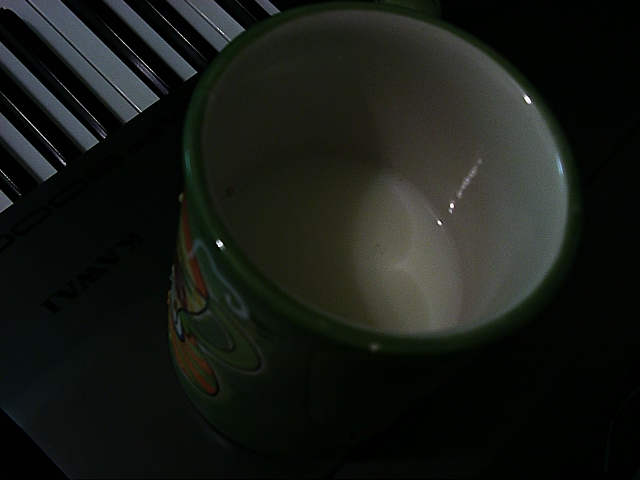
A photo showing a cardioid formed by light rays reflected in a cup of milk. ── 引自《Caustics》
不過科學終究不以『朦朧』為美也。這條平面曲線是『腎形線』
Nephroid
The nephroid is a plane curve whose name means kidney-shaped (compare nephrology.) Although the term nephroid was used to describe other curves, it was applied to the curve in this article by Proctor in 1878. This and the information below may be verified in Lockwood, pp. 62–71 (see References).
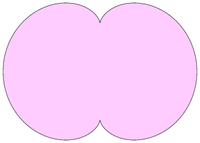
Nephroid
的一種。惠更斯在一六七八年即已演示,假使平行光被『部份圓』反射
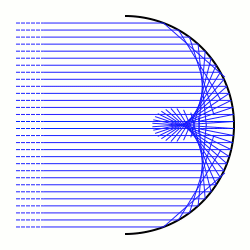
Half nephroid as caustic of a semi-circle
,反射光之『包絡線』是『腎形線』矣!!
從 Helmholtz 的非時變『波動方程式』,推導出短波長極限 ![]() 之 Eikonal 『波前方程式』。如是可說明『幾何光學』原理之實用性,及闡明許多日常現象的原由。正因『波前』之『交匯』可形成
之 Eikonal 『波前方程式』。如是可說明『幾何光學』原理之實用性,及闡明許多日常現象的原由。正因『波前』之『交匯』可形成
Caustic (optics)
In optics, a caustic or caustic network [1] is the envelope of light rays reflected or refracted by a curved surface or object, or the projection of that envelope of rays on another surface.[2] The caustic is a curve or surface to which each of the light rays is tangent, defining a boundary of an envelope of rays as a curve of concentrated light.[2] Therefore, in the image to the right, the caustics can be the patches of light or their bright edges. These shapes often have cusp singularities.
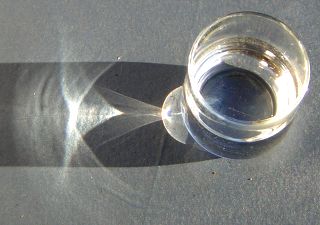
Caustics produced by a glass of water
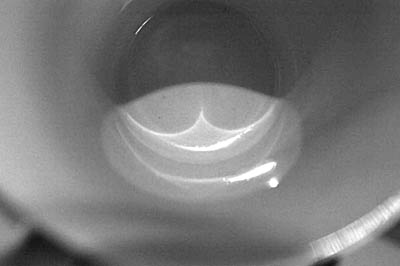
Nephroid caustic at bottom of tea cup
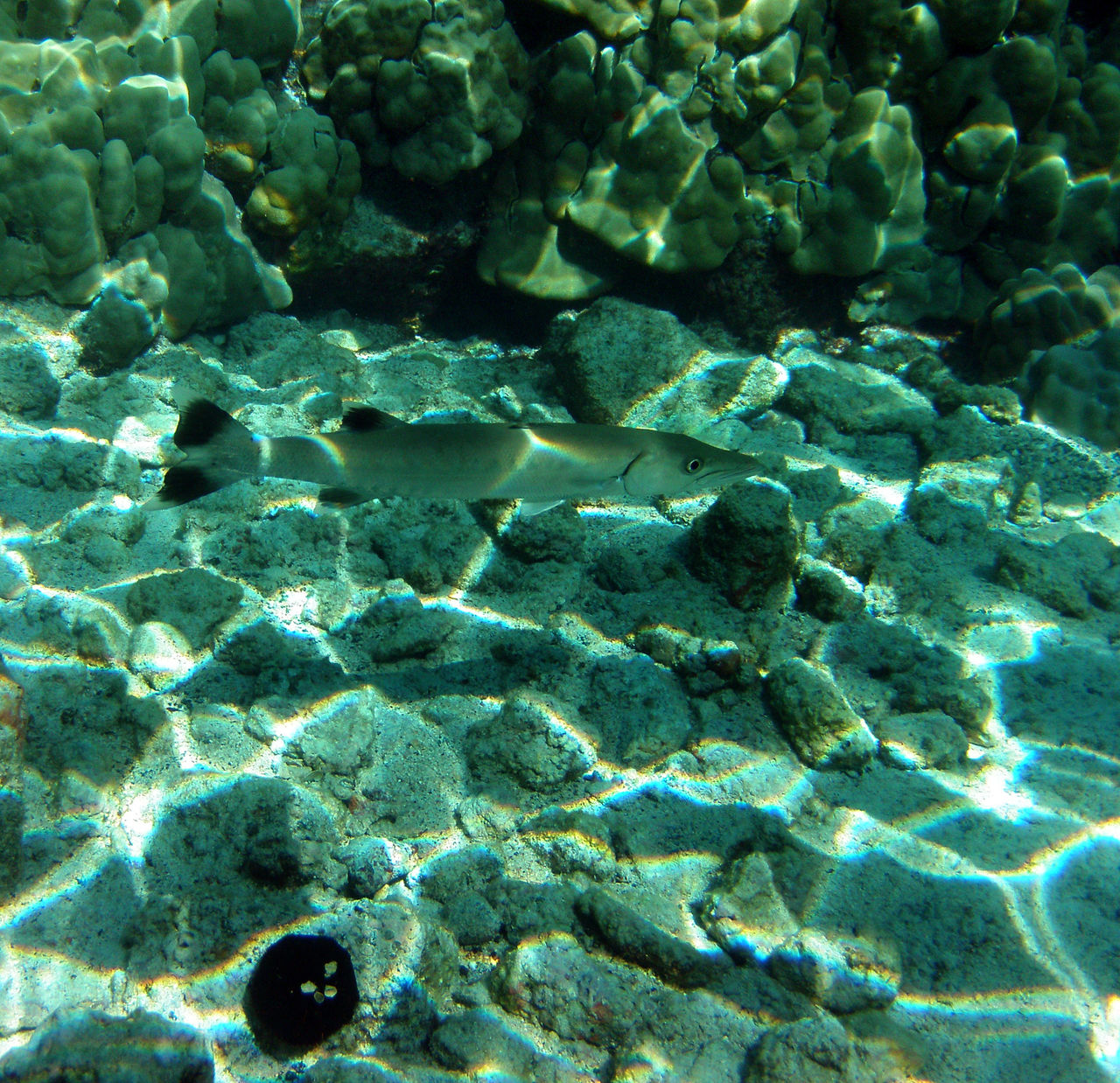
Caustics made by the surface of water
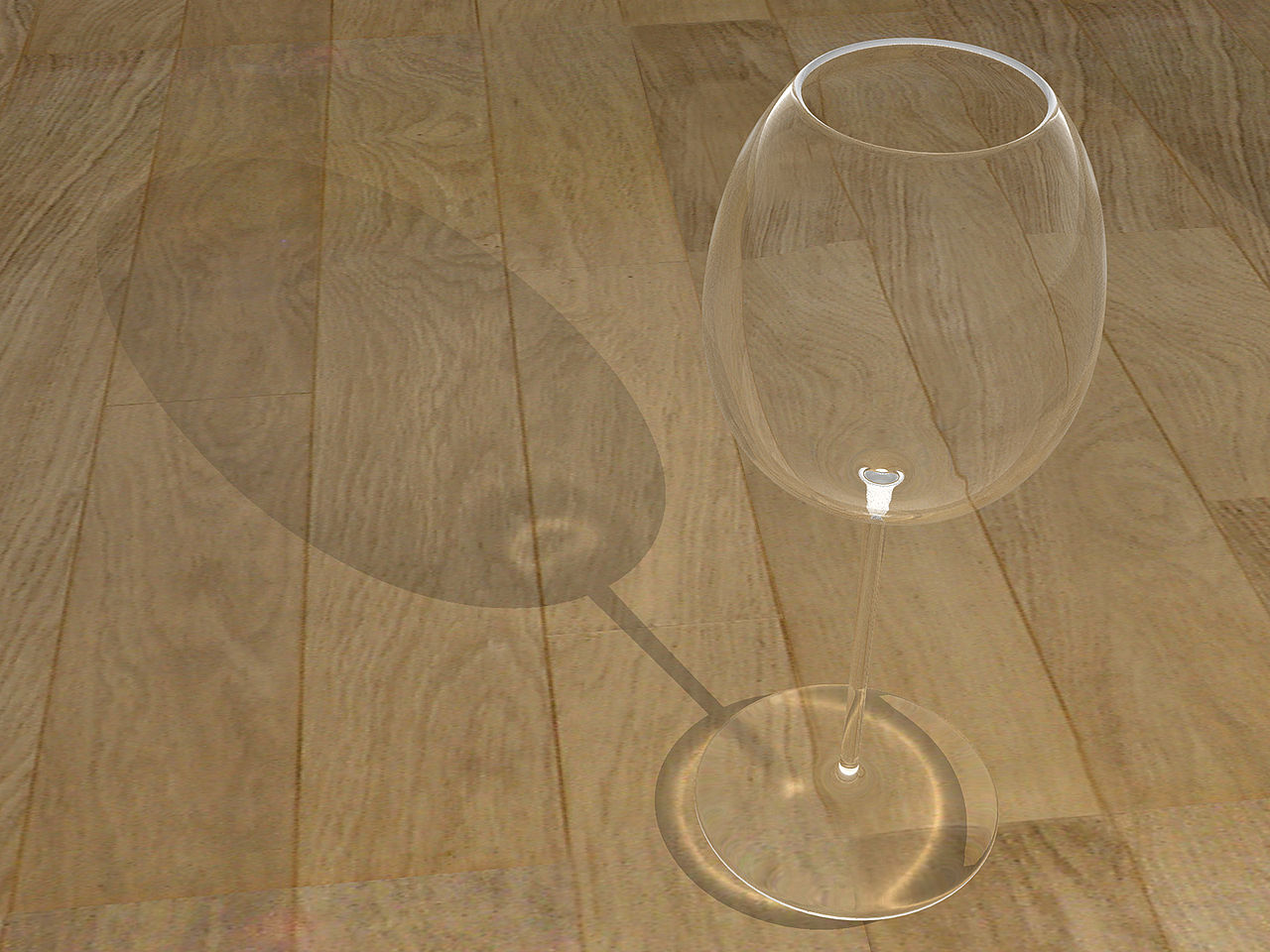
A computer-generated image of a wine glass ray traced with photon mapping to simulate caustics
Explanation
Concentration of light, especially sunlight, can burn. The word caustic, in fact, comes from the Greek καυστός, burnt, via the Latin causticus, burning. A common situation where caustics are visible is when light shines on a drinking glass. The glass casts a shadow, but also produces a curved region of bright light. In ideal circumstances (including perfectly parallel rays, as if from a point source at infinity), a nephroid-shaped patch of light can be produced.[3] Rippling caustics are commonly formed when light shines through waves on a body of water.
Another familiar caustic is the rainbow.[4][5] Scattering of light by raindrops causes different wavelengths of light to be refracted into arcs of differing radius, producing the bow.
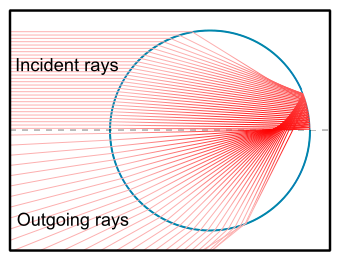
Light rays enter a raindrop from one direction (typically a straight line from the sun), reflect off the back of the raindrop, and fan out as they leave the raindrop. The light leaving the rainbow is spread over a wide angle, with a maximum intensity at the angles 40.89–42°. (Note: Between 2 and 100% of the light is reflected at each of the three surfaces encountered, depending on the angle of incidence. This diagram only shows the paths relevant to the rainbow.)
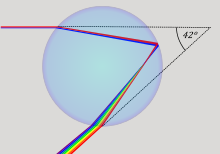
White light separates into different colours on entering the raindrop due to dispersion, causing red light to be refracted less than blue light.
大地焉不如此多嬌!!!